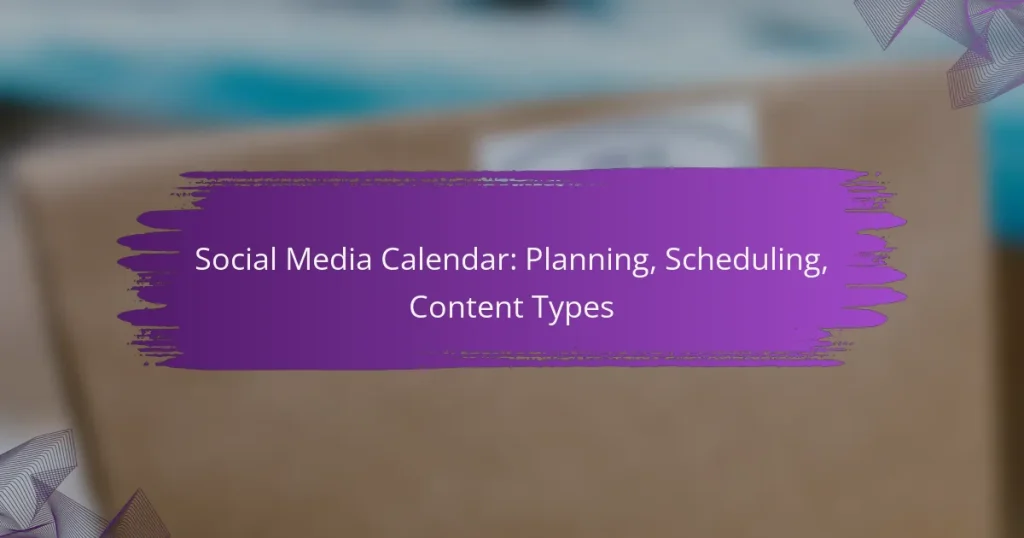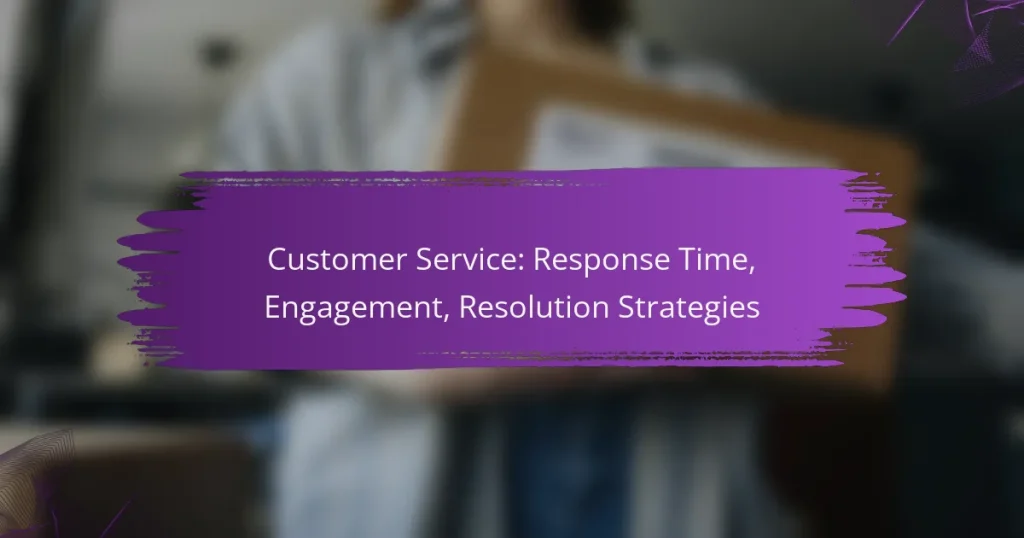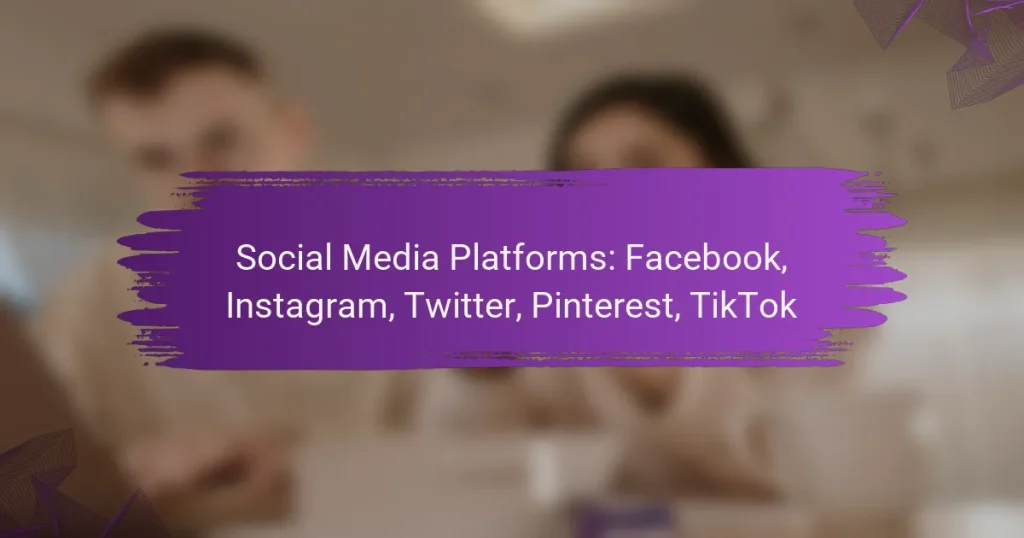E-commerce businesses can unlock substantial growth by effectively leveraging social media platforms. By crafting engaging content and implementing targeted advertising strategies, they can expand their reach, enhance brand visibility, and ultimately drive sales.
Customer Service: Response Time, Engagement, Resolution Strategies
Social Media Platforms: Facebook, Instagram, Twitter, Pinterest, TikTok
Facebook Ads: Targeting, Budgeting, Creative, Analytics
Engaging Content: Visuals, Captions, Hashtags, Stories
How can e-commerce businesses leverage social media for growth?
E-commerce businesses can significantly enhance their growth by strategically utilizing social media platforms. By creating engaging content and targeted advertisements, they can reach wider audiences, boost brand visibility, and drive sales.
Utilizing Instagram for product promotion
Instagram is a powerful platform for e-commerce product promotion due to its visual nature. Businesses can showcase products through high-quality images, stories, and reels, making it easier for potential customers to discover and engage with their offerings.
To maximize impact, consider using Instagram Shopping features that allow users to purchase directly through posts. Collaborating with influencers can also amplify reach, as their followers may trust their recommendations.
Engaging customers through Facebook ads
Facebook ads provide e-commerce businesses with robust targeting options to reach specific demographics. By utilizing tools like Custom Audiences and Lookalike Audiences, companies can tailor their ads to resonate with potential customers based on their interests and behaviors.
It’s crucial to create compelling ad copy and visuals that capture attention quickly. Regularly testing different ad formats, such as carousel or video ads, can help identify what works best for your audience.
Building brand loyalty with TikTok content
TikTok offers a unique opportunity for e-commerce brands to connect with younger audiences through creative and entertaining content. Brands can create short videos that showcase products in use, share behind-the-scenes looks, or participate in trending challenges to engage viewers.
Encouraging user-generated content can further enhance brand loyalty. Consider running challenges or contests that incentivize customers to create and share their own videos featuring your products.
Enhancing customer service via Twitter
Twitter serves as an effective platform for providing customer service and support. E-commerce businesses can respond to customer inquiries and complaints in real-time, fostering a sense of trust and reliability.
To optimize customer interactions, maintain a consistent brand voice and respond promptly. Utilizing Twitter’s features, such as polls or threads, can also engage customers and provide valuable feedback on products or services.
What are effective social media marketing strategies for e-commerce?
Effective social media marketing strategies for e-commerce include leveraging influencer partnerships, encouraging user-generated content, and utilizing targeted advertising. These approaches enhance brand visibility, foster community engagement, and drive sales through tailored messaging.
Influencer partnerships for brand visibility
Influencer partnerships can significantly boost brand visibility by tapping into established audiences. Collaborating with influencers who align with your brand values can create authentic connections and expand your reach. Choose influencers based on their engagement rates and relevance to your target market.
Consider micro-influencers, who often have loyal followings and higher engagement rates compared to larger influencers. They can be more cost-effective and provide a more personal touch, which resonates well with niche audiences.
User-generated content campaigns
User-generated content (UGC) campaigns encourage customers to share their experiences with your products, creating authentic marketing material. This strategy not only builds community but also serves as social proof, enhancing trust in your brand. Promote UGC by creating specific hashtags or contests to motivate participation.
Highlighting UGC on your social media channels can increase engagement and foster a sense of belonging among your customers. Ensure to give credit to users and consider featuring their content in your marketing materials for added authenticity.
Targeted advertising on social platforms
Targeted advertising on social media platforms allows you to reach specific demographics based on interests, behaviors, and location. Platforms like Facebook and Instagram offer robust targeting options, enabling you to tailor your ads to the right audience. Start with clear objectives and define your target audience to maximize ad effectiveness.
Utilize A/B testing to refine your ads, experimenting with different visuals, copy, and calls to action. Monitor performance metrics to adjust your strategy and ensure your advertising budget is spent efficiently, aiming for a positive return on investment.
What tools can optimize social media marketing?
Several tools can significantly enhance social media marketing by streamlining processes, improving content quality, and tracking performance. Utilizing the right tools can lead to more effective campaigns and better engagement with your audience.
Hootsuite for scheduling posts
Hootsuite is a powerful tool for scheduling social media posts across multiple platforms. It allows marketers to plan content in advance, ensuring consistent posting even during busy periods.
With Hootsuite, you can create a content calendar, set specific times for posts to go live, and monitor engagement metrics. This helps in maintaining a steady flow of content, which is crucial for audience retention.
Canva for creating visuals
Canva is an intuitive design tool that enables users to create eye-catching visuals for social media. It offers a variety of templates tailored for different platforms, ensuring that your graphics are optimized for each audience.
Using Canva, marketers can easily design images, infographics, and promotional materials without needing extensive graphic design skills. This accessibility allows for quick adaptations to marketing strategies based on current trends.
Google Analytics for tracking performance
Google Analytics is essential for tracking the performance of social media campaigns. It provides insights into user behavior, traffic sources, and conversion rates, helping marketers understand what works and what doesn’t.
By analyzing this data, businesses can refine their social media strategies, focusing on high-performing content and adjusting underperforming posts. Regularly reviewing these analytics can lead to improved ROI on marketing efforts.
How to measure the success of social media marketing?
Measuring the success of social media marketing involves analyzing various performance indicators that reflect engagement and conversion rates. Key metrics include likes, shares, comments, and website traffic generated from social media platforms.
Engagement metrics analysis
Engagement metrics are crucial for understanding how users interact with your content on social media. Common metrics include likes, shares, comments, and overall reach. A high engagement rate often indicates that your audience finds your content valuable and relevant.
To analyze engagement effectively, track these metrics over time and compare them against your goals. For instance, if your target is to increase engagement by 20% over six months, monitor your progress monthly to adjust your strategy as needed.
Conversion tracking through UTM parameters
Conversion tracking using UTM parameters allows you to measure the effectiveness of your social media campaigns in driving traffic to your website. UTM parameters are tags added to your URLs that provide insights into where your visitors are coming from and how they interact with your site.
To implement UTM tracking, create unique URLs for each campaign and social media platform. For example, a link shared on Facebook might look like this: www.yoursite.com?utm_source=facebook&utm_medium=social&utm_campaign=summer_sale. This way, you can analyze which platforms and campaigns yield the highest conversion rates.
What are the prerequisites for a successful social media strategy?
Successful social media strategies require a deep understanding of your target audience and well-defined marketing goals. These prerequisites ensure that your efforts are focused and effective, maximizing engagement and conversion rates.
Understanding target audience demographics
Identifying your target audience’s demographics is crucial for tailoring your social media content effectively. Key factors include age, gender, location, interests, and purchasing behavior. For instance, a brand targeting millennials may focus on platforms like Instagram and TikTok, while a business aimed at older adults might prioritize Facebook.
Utilize tools such as Google Analytics and social media insights to gather data on your audience. This information helps in creating content that resonates with your audience and drives engagement. Regularly revisiting and updating your demographic data ensures your strategy remains relevant.
Setting clear marketing goals
Establishing clear marketing goals is essential for measuring the success of your social media strategy. Goals should be specific, measurable, achievable, relevant, and time-bound (SMART). For example, aiming to increase followers by 20% within six months provides a clear target to work towards.
Consider various types of goals, such as brand awareness, lead generation, or customer retention. Each goal will require different tactics and metrics for evaluation. Regularly assess your progress and adjust your strategies as needed to stay aligned with your objectives.
What are the emerging trends in e-commerce social media marketing?
Emerging trends in e-commerce social media marketing include innovative strategies that enhance customer engagement and drive sales. Key developments such as live shopping events and influencer collaborations are reshaping how brands connect with consumers online.
Rise of live shopping events
Live shopping events are becoming a popular trend in e-commerce, allowing brands to showcase products in real-time while interacting with viewers. These events typically feature hosts demonstrating products, answering questions, and offering exclusive deals, creating a dynamic shopping experience.
To effectively implement live shopping, brands should choose the right platform, such as Instagram Live or Facebook Live, and promote the event in advance to build anticipation. Engaging hosts who can connect with the audience and provide genuine product insights are crucial for success.
Consider offering limited-time discounts or exclusive products during the live event to encourage immediate purchases. Brands should also analyze viewer engagement metrics post-event to refine future strategies and improve conversion rates.




